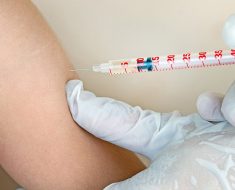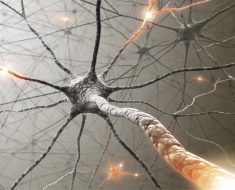A second randomized controlled trial in the space of 3 days has shown benefit of endovascular thrombectomy for the treatment of stroke caused by basilar artery occlusion.
The Basilar Artery Occlusion Chinese Endovascular (BAOCHE) trial was presented at the European Stroke Organisation Conference (ESOC) 2022 on May 6.
Just 2 days earlier, a similar trial (ATTENTION) was presented at the same meeting, also showing a benefit of thrombectomy in patients with basilar artery occlusion stroke. These are the first randomized trials to show benefit of thrombectomy in this population.
The two trials, which were both conducted in China, differed slightly in that ATTENTION recruited patients presenting within 12 hours of stroke onset whereas BAOCHE enrolled patients in the 6- to 24-hour time window.
Both trials have shown remarkably similar results, with large increases in the number of patients achieving favorable functional outcomes when treated with thrombectomy.
In the BAOCHE trial, endovascular thrombectomy improved rates of a favorable functional outcome, defined as a modified Rankin Scale (mRS) score of 0 to 3 at 90 days, by 22% from 24.3% in the control groups to 46.4% in the intervention group, with a number needed to treat of just 4.5, reported colead investigator, Tudor Jovin, MD, chair of neurology at Cooper University Hospital, Cherry Hill, New Jersey.
The ATTENTION trial showed a 24% increase in the rates of the same favorable outcome, with a number needed to treat of 4.
Also, similar to the ATTENTION trial, the BAOCHE trial suggested a sizable increase in symptomatic intracranial hemorrhage with thrombectomy but, despite this, showed a strong trend toward a reduction in mortality.
“The BAOCHE results support the concept that endovascular therapy for late presenting patients with basilar occlusion stroke has similar efficacy compared to endovascular therapy for patients with early presenting basilar artery occlusion and to patients with anterior circulation large vessel occlusion stroke,” Jovin concluded.
“I think that what we’ve heard at ESOC this year is that it is time to not make any differences any longer between the way we approach basilar occlusion compared to anterior circulation large vessel occlusion,” he stated.
Introducing the presentation, Jovin explained that it is known that thrombectomy improves clinical outcomes in patients with anterior circulation large vessel occlusion up to 24 hours after symptom onset, “but until the ATTENTION trial was presented earlier in the ESOC meeting, there was no class 1 evidence in favor of thrombectomy in the posterior circulation at all, and the ATTENTION trial did not look at this question in patients presenting late, after 12 hours.”
He noted that the objective of the BAOCHE trial was to assess the safety and efficacy of thrombectomy for stroke due to basilar artery occlusion in patients randomized within 6 to 24 hours from symptom onset or time last seen well.
The trial included patients with proven basilar artery occlusion stroke 6-12 hours after symptom onset with a baseline National Institutes of Health Stroke Scale (NIHSS) score of more than 6.
The investigators sought to exclude patients with a large infarct at baseline with inclusion criteria specifying a posterior circulation Alberta Stroke Program Early CT Score (ASPECTS) score of 6 or greater and a pons midbrain index score of 2 or less.
Patients were randomized to endovascular thrombectomy treatment with best medical management or to best medical management alone (control). It was planned for the trial to include 318 patients, but enrollment was stopped early after 218 patients because of a benefit in the intervention arm.
Before unblinding, the investigators changed the primary endpoint from a favorable functional outcome of mRS 0 to 4 to a favorable functional outcome of mRS 0 to 3.
Jovin explained that this was done because of the recent publication of two other randomized trials of thrombectomy in patients with basilar artery occlusion, the BEST and BASICS trials, “which allowed us to reassess the probable treatment effect,” and which suggested that “the outcome of mRS 0 to 3 appeared to be a stronger discriminator of treatment effect, and most other trials had used mRS 0 to 3 as their primary endpoint.”
Results showed that baseline characteristics were similar in the two groups. Median baseline NIHSS score was 20; 60% of patients were enrolled in the 6- to 12-hour window, and 40% in the 12- to 24-hour window; thrombolysis was given in about 17% of patients (13% of the thrombectomy groups and 21% of the control group).
The primary result — a good functional outcome (mRS 0 to 3) at 90 days — was achieved by 46.4% of the thrombectomy group versus 24.3% of the control group, giving an adjusted odds ratio of 2.92, which was highly statistically significant (P = .001).
The presentation of this result was greeted with applause from the audience.
Mortality showed an 11% absolute difference in favor of thrombectomy (30.9% versus 42.1%), which did not reach significance. And symptomatic intracranial hemorrhage showed a strong trend toward a higher rate in the thrombectomy group (6% vs 1%), again not reaching statistical significance.
In terms of secondary outcomes, there was a similar benefit in the mRS shift analysis, with an adjusted common odds ratio of 2.64. “That is totally on par with results of trials of thrombectomy in the anterior circulation,” Jovin said.
The outcome of mRS 0 to 2 also showed a statistically significant benefit in the thrombectomy group, with an absolute difference of almost 25% (39% vs 14%), and the initial 0 to 4 mRS endpoint trended toward a positive result (55% vs 43%), which did not quite reach statistical significance.
Prespecified subgroup analyses showed no modification of treatment effect according to age, baseline NIHSS score, or randomization time window (before or after 12 hours). But a post hoc subgroup analysis of location of basilar occlusion suggested a larger treatment effect in patients with a larger stroke burden in the midbrain, Jovin noted.
The trial was well received by experts at the ESOC meeting.
Cochair of the plenary session at which the study was presented, Peter Kelly, MD, professor of neurology at Mater University Hospital/University College Dublin, Ireland, and the incoming president of ESOC, described the study as showing “beautiful data.”
In an interview with Jovin, Alastair Webb, MSc, DPhil, professor of neurology at the University of Oxford’s Wolfson Centre for Prevention of Stroke and Dementia, United Kingdom, said the trial had shown “very impressive benefits” and “tremendously impactful results for our patients.”
Commenting for theheart.org | Medscape Cardiology, Webb said that overall, the results of the two Chinese trials together — ATTENTION and BAOCHE — provide the first good quality evidence for the benefit of thrombectomy for basilar artery occlusion in certain patients.
“The evidence from both trials [is] particularly important in demonstrating that there is likely to be benefit in patients with more severe events, without established infarction, presenting after the classic 4.5-hour time window for thrombolysis,” Webb noted.
“Although scientifically the fact that these trials were specific to the Chinese population leaves some question about whether these results apply in other healthcare settings, the strength of the benefit in these two trials will support the use of basilar thrombectomy in this time window in all patient groups everywhere, unless further contradictory evidence is published, which is unlikely,” he added.
However, Webb pointed out that the differences between these trials, in which most patients were not eligible for thrombolysis, and the lack of benefit in the previous BASICS and BEST trials for thrombectomy compared with thrombolysis, means that it remains unproven that endovascular therapy plus thrombolysis is superior to thrombolysis alone in the early time window.
“Nonetheless, the results of ATTENTION in particular will provide support for the use of endovascular therapy plus thrombolysis within the 4.5-hour time window, as the majority of stroke specialists still believe this is the correct choice in most severely affected patients despite the results of the previous trials,” he commented.
On the change of the primary outcome during the BAOCHE trial, Webb said: “Although this isn’t good practice, I don’t think that in this case it has a significant impact on the conclusions.”
The BAOCHE trial was sponsored by the Chinese National Ministry of Science and Technology.
European Stroke Organisation Conference (ESOC) 2022. Presented May 6.
Source: Read Full Article





